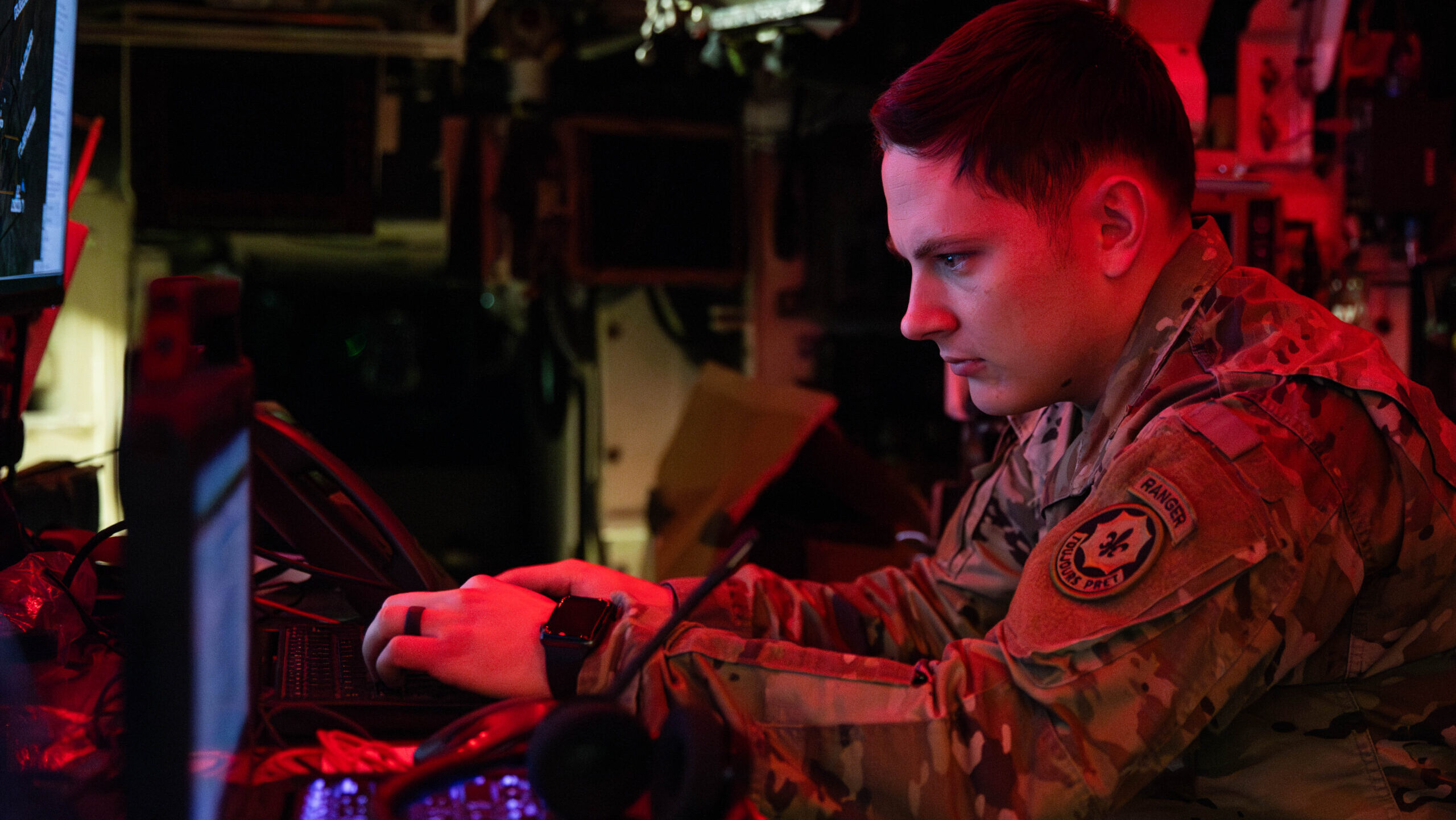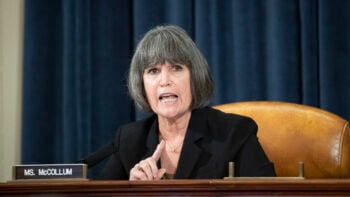
U.S. Army Cpt. Daniel Reape, assigned to the 2nd Cavalry Regiment, communicates with headquarters using Tactical Mission Data Platform during Brave Partner exercise on Ramstein Air Base, Germany Nov. 30, 2023. (U.S. Army Reserve photo by Spc. William Kuang)
WASHINGTON — As modern militaries and the AI they’re wrestling with increasingly demand well-ordereddata, the US Army is creating a hierarchy of officials to say clearly, for the first time, “who’s doing what” for data management across the service, the Army’s chief data and analytics officer told Breaking Defense.
A central principle of the new policy, David Markowitz explained, is “establishing a better feedback loop between those that produce data and those that use Army data” — in other words, improving the connection between the supply side and data demand.
Markowitz’s boss, Army CIO Leonel Garciga, laid out the new policy in an April 2 memorandum [PDF] on “Army Data Stewardship Roles and Responsibilities.” Some of the memo, Markowitz explained, is simply “formalizing and institutionalizing” jobs that Army officers and officials have already been doing more or less “ad hoc,” like the chief data stewards the Army has been creating at many of its subordinate commands: “The roles and responsibilities memo codifies the who is doing what, so that we get speed.”
At the top of this newly codified hierarchy are four “Mission Area Data Officers,” or MADOs, with wide responsibilities for data relevant to, respectively:
- the Warfighter (IT for operations, training, and readiness),
- military Intelligence (IT distinguished by its stringent classification requirements),
- Business systems (IT for payroll, finances, management, etc.), and
- the Enterprise Information Environment (the IT that helps the rest of the IT function, including cybersecurity).
These four Mission Areas were codified by Army Regulation 25-1 back in 2017, itself reflecting Pentagon policy, and each is overseen by a three-star deputy chief of Army staff or, for business systems, a civilian Senior Executive Service official. It’s these four “Mission Area Leads” who nominate and oversee the four Mission Area Data Officers, with the appointments subject to Markowitz’s approval.
The Mission Area Data Officers, in turn, oversee and appoint “data stewards” who set policy for various aspects of the mission area — who can access a given type of data, how long it should be retained, and how it should be generated. These data stewards then oversee and appoint “Functional Data Managers,” who will generally be Program Executive Officers, Project Managers, and other existing officials now being given new responsibilities for managing the data their systems produce.
For example, Markowitz explained, the Mission Area Data Officer for business systems will oversee (among many other things) Army personnel data, with the deputy chief of staff for personnel (staff section G-1) acting as the Data Steward for human resources data, while Army Human Resources Command will act as Functional Data Manager. “G1 sets the policy, HRC executes,” he said.
Overall, the Army hopes the new hierarchy of Mission Area Data Officers, Data Stewards, and Functional Data Managers will provide clarity and coordination on the supply side, for the generation of Army data. Their complement on the demand side, consuming the data, will be what are now being called Command Chief Data & Analytics Officers (C2DAOs).
“The MADO is overseeing data generation at the enterprise level, and the commands are consumers at the enterprise level,” Markowitz said. For the commands, he went on, “this memo formally establishes a Command CDAO’s roles and responsibilities. Folks with titles of a CDO [chief data officer] have been emerging in recent hiring actions and commands want to hire this skill set, and so we have provided a common role” to keep things consistent.
The memo emphasizes that the Command CDAOs “do not produce Army enterprise data policy. Rather, they implement and enforce policy from the Army headquarters data stewardship hierarchy.”
Other services and DoD organizations also have data stewards and functional data managers, Markowitz noted, but, so far, “Mission Area Data officers and Command CDAOs are unique in the Army.”






















